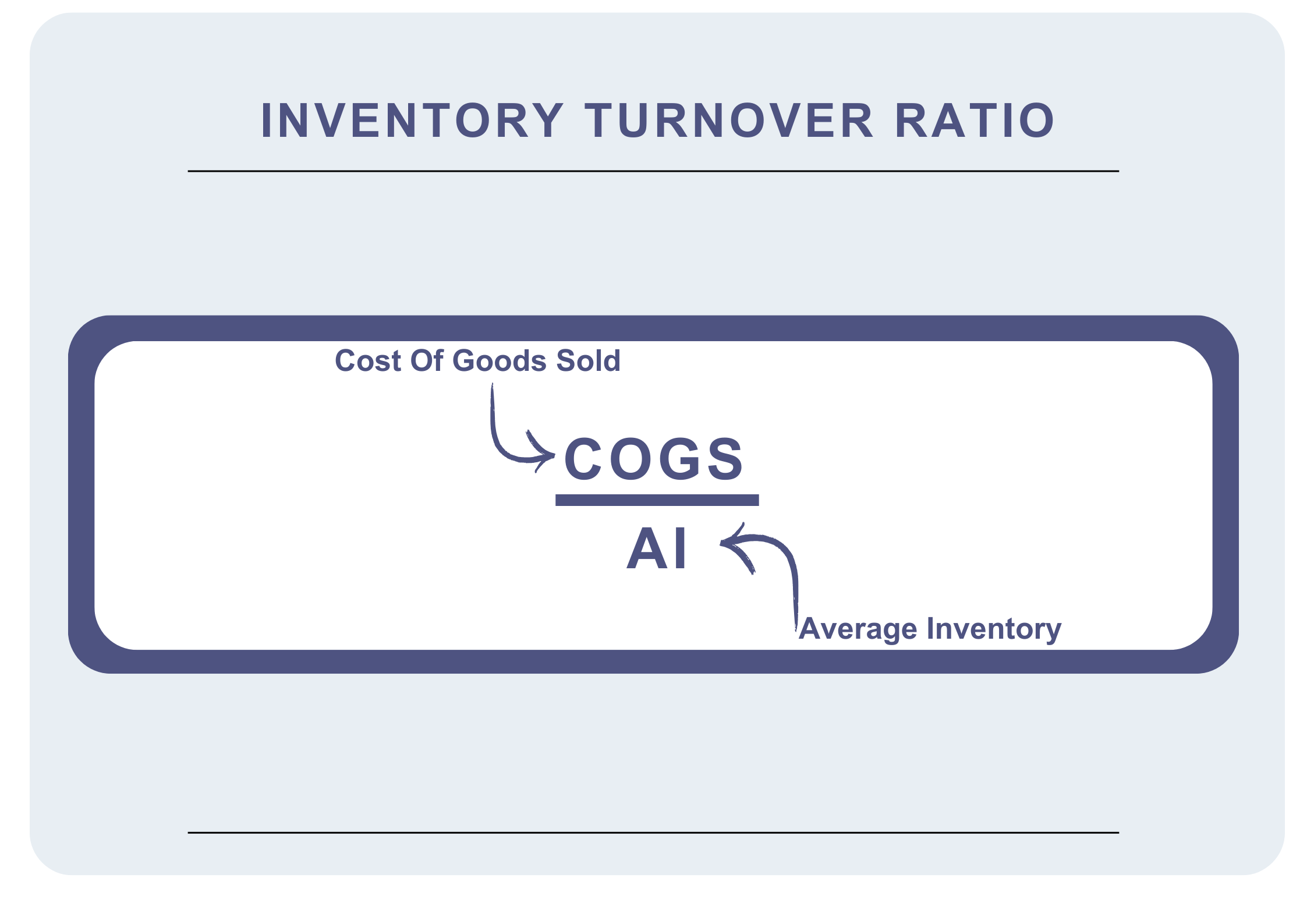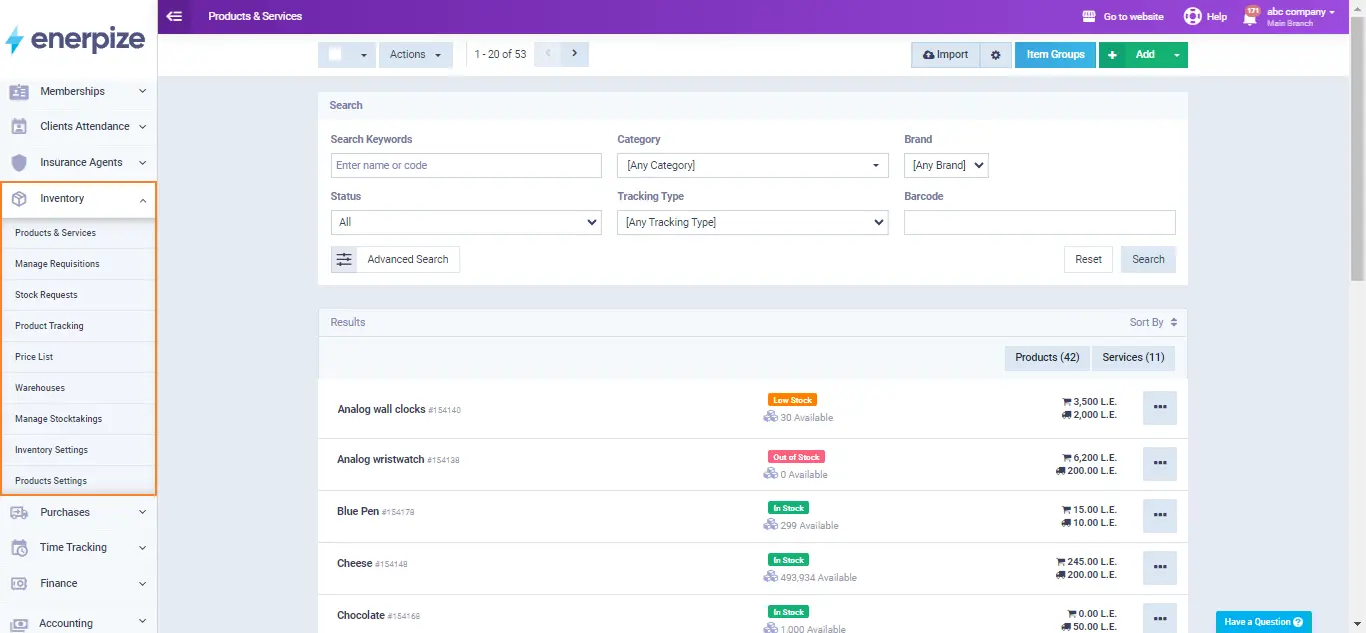Author : Haya Assem
Reviewed By : Enerpize Team
Average Inventory: Definition and How To Calculate

Table of contents:
- What is Average Inventory?
- Average Inventory Formula
- How to Calculate Average Inventory
- Average Inventory Calculating Example
- Importance of the Average Inventory Formula
- Limitations Of the Average Inventory Formula
- What Is Average Inventory Turnover
- What Is the Moving Average Inventory Method
- What Is the Weighted Average Inventory Method
- Is The Average Inventory Formula Right For Your Business?
- How Can Enerpize Help You Manage Your Inventory?
- FAQs About Average Inventory Calculation
Effective inventory management is crucial for business success, requiring a balance between overstocking and understocking. Various inventory management methods may be used to properly manage a business's inventory, such as ABC analysis, the perpetual inventory system, FIFO and LIFO accounting, and the average inventory methods. Each of them is useful, but which one to choose depends on the specific demands of each business. In the following lines, we will list everything you need to know about average inventory so you can determine whether it is suitable for your business.
Key Takeaways
- Average inventory is calculated by adding the beginning and ending inventory and dividing by two, offering insights into stock levels.
- This formula is essential for inventory management, helping businesses balance stock to avoid overstocking or stockouts.
- It plays a key role in calculating important metrics like inventory turnover and days sales of inventory (DSI).
- Using average inventory for financial analysis allows businesses to assess inventory efficiency and optimize cash flow.
What is Average Inventory?
Average inventory is the average amount of inventory a business has on hand during a specific period, typically calculated by adding the beginning and ending inventory and dividing by two. This metric helps businesses understand how much stock they typically hold, which is useful for tracking inventory trends, managing storage costs, and evaluating efficiency in inventory management.
Average Inventory Formula
The average inventory formula is used to estimate the average amount of inventory a business holds over a specific period. It helps assess inventory levels and is essential for calculating inventory turnover.
The average inventory is calculated using the following formula:
Average inventory Formula = (Beginning Inventory + Ending Inventory) ÷ 2
.png)
Here's a breakdown of the terms:
- Beginning Inventory: The value of inventory at the beginning of the accounting period.
- Ending Inventory: The value of inventory at the end of the accounting period.
The formula smooths out any fluctuations in inventory levels that may occur during the period by taking the average. This average may be used to calculate crucial financial ratios like inventory turnover and days sales of inventory, which show how well a company manages its inventory.
How to Calculate Average Inventory
Average inventory helps track stock levels over time, providing insights into inventory turnover and management. Follow these steps to calculate it easily.
1- Determine the Beginning Inventory
Find the inventory value at the start of the period (e.g., the first day of the year, quarter, or month). This value is usually taken from the balance sheet or inventory records
2- Determine the Ending Inventory
Identify the inventory value at the end of the same period (e.g., the last day of the year, quarter, or month).
3- Add Beginning and Ending Inventory
Add the two inventory values together:
Total = Beginning Inventory + Ending Inventory
4- Divide by 2 to Find the Average
Take the total from Step 3 and divide it by 2:
Average Inventory = (Beginning Inventory + Ending Inventory) ÷ 2
5- Use the Result in Inventory Analysis
Now you can use the average inventory figure to calculate metrics like the inventory turnover ratio or to monitor inventory trends over time.
Useful Tool: Online Average Inventory Calculator
Average Inventory Calculating Example
Consider a retail business operating in the food industry. At the beginning of a specific month, the company had an inventory valued at $50,000, comprising various food items. As the month progressed, new stock arrived, and customers made purchases, leading to an ending inventory value of $70,000 at the close of the month.
Given information:
- Beginning inventory = $50,000
- Ending inventory = $70,000
Following the average inventory formula:
Average inventory Formula = (Beginning Inventory + Ending Inventory) ÷ 2
Average Inventory = (50,000 + 70,000) ÷ 2 = 120,000 / 2 = 60,000
So, the average merchandise inventory for the period is $60,000.
Keep in mind that this formula provides a simple average and is often used for analytical purposes to understand trends and make informed decisions about inventory management.
Importance of the Average Inventory Formula
The average inventory formula is essential for businesses that manage physical products. It helps determine the typical inventory held during a period, offering valuable insights for financial analysis, planning, and inventory control. Here are the main reasons why the average inventory formula matters:
Enhances Financial Analysis
Average inventory is used to calculate key performance ratios like inventory turnover and days sales of inventory (DSI). These ratios help assess how efficiently a company manages and sells its stock.
Supports Budgeting and Planning
By estimating regular stock levels, businesses can better forecast cash flow and plan for working capital needs. It ensures that inventory budgets align with expected operational demands.
Improves Supply Chain Efficiency
Using average inventory helps prevent both stock shortages and overstocking. It contributes to better purchasing decisions and more balanced inventory levels throughout the supply chain.
Assists in Seasonal and Capacity Planning
Retailers and manufacturers use this formula to prepare for high-demand periods, such as holidays or promotions, ensuring enough stock without creating surplus.
Identifies Inventory Trends
Tracking average inventory over time reveals patterns in stock movement and highlights areas for improvement, helping businesses refine their inventory strategies.
Limitations Of the Average Inventory Formula
Despite its widespread use, the average inventory formula has limitations. From sensitivity to seasonal variations to potential errors in estimated balances, understanding these constraints is crucial for accurate inventory management and financial analysis.
Estimation errors
The method is based on estimations for the beginning and ending inventories, which might lead to inaccuracies if the calculations are not exact. Estimated balance inaccuracies might alter the calculated average inventory.
Sensitivity to Seasonal Variations
The formula may not account for seasonal fluctuations in demand. If a business experiences significant seasonal variations, the average might not accurately represent inventory needs during peak and off-peak periods.
Short-term fluctuations may be overlooked
By averaging the beginning and ending inventory, the formula may overlook short-term fluctuations or spikes in inventory levels during the period. This could lead to misinterpretation of inventory management effectiveness.
Not appropriate for all inventory patterns
For businesses with irregular or unexpected inventory trends, the average inventory calculation may not be appropriate. Other options may be better suited for businesses with quick fluctuations in demand or just-in-time (JIT) inventory systems.
Download Now: Free Excel Inventory Aging Report Template
What Is Average Inventory Turnover
Average inventory turnover is a financial metric that shows how many times a company's average inventory is sold and replaced over a specific period, usually a year. It helps measure how efficiently a business manages its stock.
Formula:

Instead of applying this formula manually, you can download our inventory turnover Excel template or use our online inventory turnover calculator to measure the inventory turnover easily.
What Is the Moving Average Inventory Method
The moving average inventory method is a cost flow method used in inventory accounting, where the cost of inventory is recalculated every time a new purchase is made. This method calculates a new weighted average cost per unit after each inventory purchase, which is then applied to the cost of goods sold (COGS) and ending inventory until the next purchase occurs.
Read Also: How to Calculate Cost of Goods Sold
What Is the Weighted Average Inventory Method
The weighted average inventory method is a cost accounting technique that assigns a uniform average cost to all units of inventory, regardless of purchase date or price. This average is calculated using the total cost of all inventory available for sale divided by the total number of units available during a specific period.
Is The Average Inventory Formula Right For Your Business?
The average inventory formula is suitable for businesses with stable inventory levels and simple inventory management, as it provides a quick way to estimate typical inventory levels over a period. It works well for businesses with steady demand and predictable stock.
However, it's less effective for businesses with highly fluctuating inventory, perishable goods, or complex inventory systems, where more detailed methods like FIFO or moving averages may provide more accurate insights.
In short, the formula is ideal for small to medium businesses with simpler inventory needs but may not be the best choice for more complex or dynamic inventory environments.
Read Also: Benefits of Using Inventory Management Software for Medical Clinics
How Can Enerpize Help You Manage Your Inventory?
Enerpize is an online inventory management software designed to streamline various aspects of operations, including accounting, sales, inventory, and more. It simplifies inventory management by offering real-time tracking, automated replenishment, and detailed reporting.
These features help businesses optimize stock levels, prevent overstocking or stockouts, and make informed, data-driven decisions.
Enerpize integrates seamlessly with sales and order systems, ensuring that inventory is automatically updated in real-time, reducing manual effort and improving accuracy. Additionally, Enerpize provides powerful tools for analyzing inventory turnover, sales trends, and other key metrics, helping businesses gain deeper insights into their inventory performance.

FAQs About Average Inventory Calculation
How To Find Average Inventory?
To find the average inventory, simply add the beginning inventory and the ending inventory for a specific period, and then divide the sum by 2. The formula is:
Average Inventory = (Beginning Inventory + Ending Inventory) ÷ 2
This provides a simple average that represents the typical stock level over the period.
How To Calculate Weighted Average Inventory?
To calculate weighted average inventory, the formula is slightly different as it takes into account the cost of inventory purchased at different times. The formula is:
Weighted Average Inventory = Total Cost of Goods Available for Sale ÷ Total Units Available for Sale
This method gives more weight to inventory purchased at higher costs, helping businesses calculate a more accurate average inventory cost.
Download Now: Weighted Average Inventory Excel Template
What is the Average Inventory Period?
The average inventory period measures how long, on average, inventory is held before being sold or used. The formula is:
Average Inventory Period = (Average Inventory ÷ Cost of Goods Sold) × 365
This helps businesses understand how long it takes to turn over inventory, aiding in inventory management and cash flow planning.
Inventory management is easy with Enerpize.
Try our inventory module to manage your inventory







